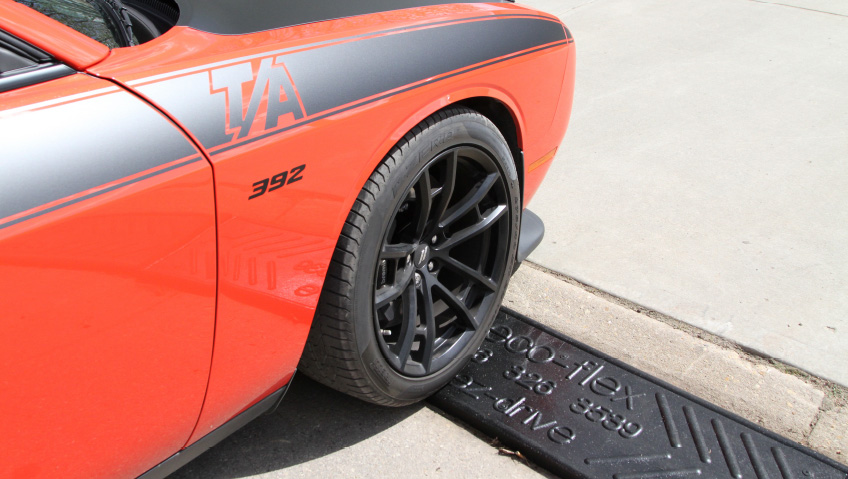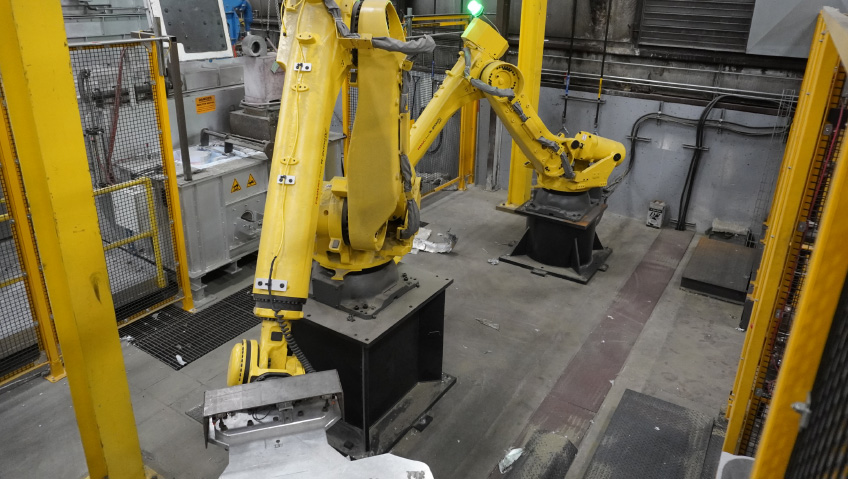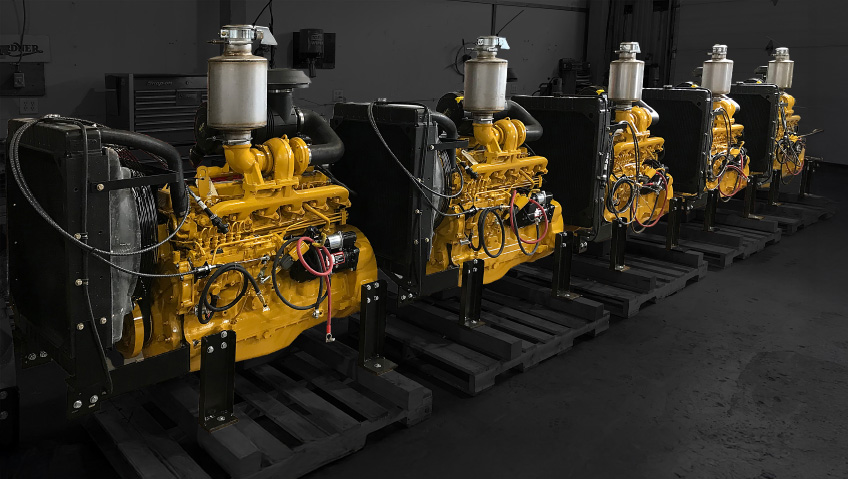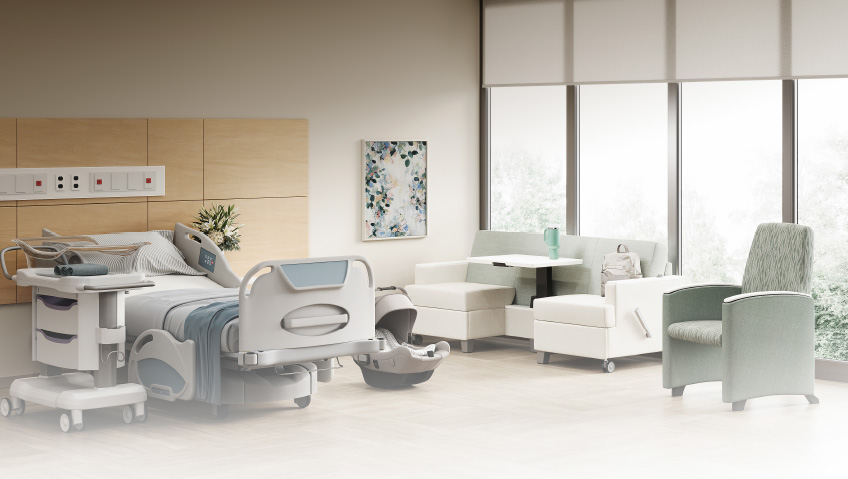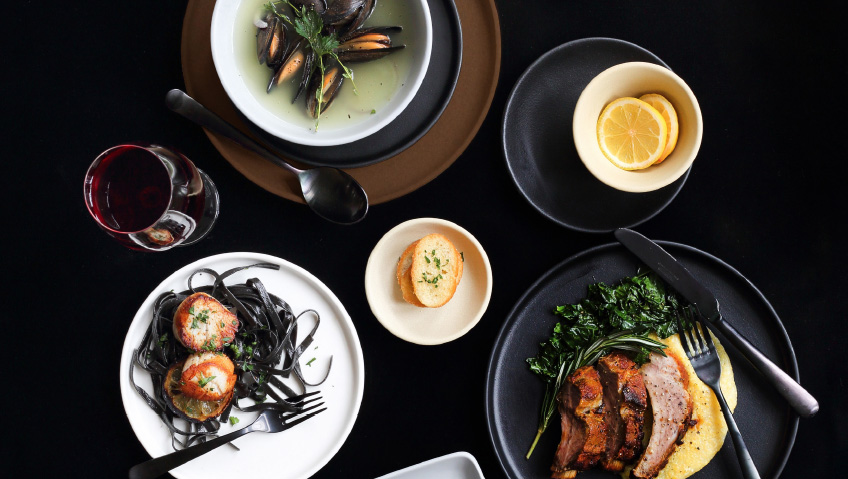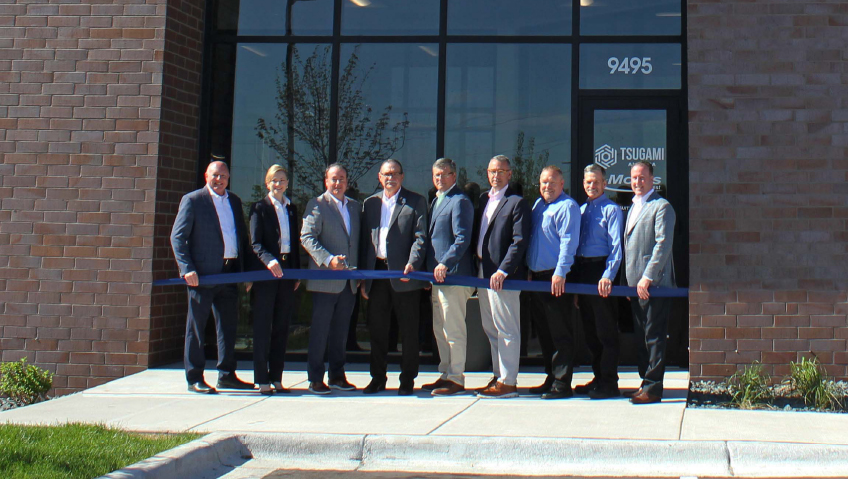Eco-Flex of Sturgeon County, Alberta, marked its 30th anniversary last year as a leader in the recycled rubber product market. The company is well-poised for future growth with products that appeal to clients looking for quality eco-friendly goods. Eco-Flex’s proprietary wares include an innovative sound barrier/residential wall as well as items for work sites, homes, and barns, all made from recycled rubber tires.
“We only sell our own products,” says Vice President Michael Lobsinger. “75 percent of our products are patented in America and Canada. We’re the only people in the world that make the industrial mats we make. We’re the only people in the world who make a rubber sound barrier wall.”
Old tires, new life
The tire recycling process goes as follows: used tires are collected at tire shops and other locales and shipped to Liberty Tire Recycling, a firm with a branch at the Eco-Flex facility that works closely with the company.
Liberty Tire shreds and processes the tires, reducing them to crumb of different sizes. Fibre and metal are separated and recycled as well. Eco-Flex takes the tire crumb and subjects it to an in-house fabrication process. Using moulds and other methods and materials, Eco-Flex transforms tire crumb into rubber-based products.
The company sells “30-plus products” in the commercial, automotive, and industrial markets, says Lobsinger.
Asked about the most popular products in each category, he says, “On the commercial side, the Eco-Flex Equine mats do really well, for barns and stables. They essentially last forever and are great for the animals. On the industrial side, our walkways and heavy-duty mats are our most successful. In automotive, we make a ton of curb ramps.”
The company’s Eco-Flex Equine category includes Keystone Interlock and I-Mat Interlock, a pair of equestrian flooring products. Eco-Walk Industrial Walkways, meanwhile, are 14-foot-long, 46-inch wide pathways that ensure pedestrians can safely walk around industrial and construction sites. Eco-Flex Industrial Floor Mats, meanwhile, can be used as flooring in factories or machine shops while EZ-Drive Curb Ramps bridge the gap between a driveway and a street.
“We can also take back our used products, reprocess them and make products again out of twice-recycled tires. It’s a circular economy,” says Lobsinger.
Depending on the item, Eco-Flex sells its wares direct to customers, or through retail distributors such as Canadian Tire, UFA, and Home Hardware.
The Eco-Wall
Of all its products, the company is particularly pleased with the rubber Eco-Wall, which was introduced a few years ago. The Eco-Wall consists of eight-foot-long panels, each made from roughly 50 pounds of recycled rubber crumb (the equivalent of 3.5 average-sized vehicle tires) and can be used either as a sound barrier or a residential wall. It comes in various colours (brown, black, gray, sandstone, and redwood) and resembles an ordinary brick wall.
The HD Eco-Wall is larger, with 10-foot-long panels that utilize 170 pounds of rubber crumb (equivalent to 10.5 tires). Both versions offer an alternative to traditional concrete sound barriers.
“By using recycled material, we’re reducing our carbon footprint. The main reason we make it, however, is for sound attenuation. You’re going to get approximately 25 percent noise reduction compared to concrete because sound can be absorbed and bounced off rubber better than concrete. Another benefit: if they are spray-painted, they can be power-washed off, as opposed to concrete, where the spray paint is absorbed,” states Lobsinger.
The Eco-Wall costs less, is easier to install, and lasts longer than a concrete sound barrier. “A good concrete wall might last five to 10 years, where our wall will probably last 20 to 30 years,” says Lobsinger.
In cold weather, Eco-Walls flex and adjust, whereas concrete cracks and deteriorates. The Eco-Wall is also safer for drivers; the consequences of hitting a rubber wall with a car are considerably less grim than smashing into an inflexible concrete wall, notes Lobsinger.
Eager to make Eco-Wall its flagship product, Eco-Flex has been marketing it to municipalities. While a handful of North American communities have adopted the Eco-Wall, other municipalities seem hesitant to replace tried and true concrete sound barriers with something new. Interest is growing, however, especially in the United States.
“Lots of smaller communities are open to it. The sound transmission aspect drives their decision-making. If you’re separating a highway from a residential area, this is a no-brainer,” Lobsinger states.
He believes the Eco-Wall represents “the future of the company. There’s no reason why this shouldn’t be the industry standard. I think if we speak in five years, we’ll be predominantly a sound barrier company because I think it’s the best product we have and there’s endless demand for it.”
New thinking, new products
For all its enthusiasm for Eco-Wall, the company continues to conduct R&D into other potential new products. On occasion, Eco-Flex even produces custom goods for clients.
“We put resources toward research and development every year,” says Lobsinger. “It’s usually customer-driven, where a customer will say to us, ‘Can you make this or that?’ Last year, we made a fuel containment pad for an energy company that can’t afford any fuel leaks into the environment. We developed a pad system where there are no seams—any spill can be contained within the pad. That’s a unique product we made through R&D, and it was customer-driven.”
Eco-Flex was founded in 1992 by Alan Champagne. Champagne was a truck driver who began manufacturing upholstered covers for the front of truck engines. He was also a farmer who recognized a need for animal beds. Champagne sought out the best possible materials to make his animal beds.
He wanted “something that wouldn’t retain water and would reduce bugs, and he started shredding tires to make the beds. The demand shot through the roof for these things so he basically dropped the upholstery division and focused on rubber products from there,” recalls Lobsinger.
Eco-Flex flourished and, roughly 18 months ago, opened a plant in Lampasas, Texas to address the U.S. market.
“America has moved toward products being made in America, so it’s very advantageous to have locally-made products there. You can get infrastructure projects that way,” Lobsinger says.
Environmental importance
Champagne remains president of the firm, but the nature of Eco-Flex’s business has changed dramatically over the decades. Until a few years ago, customers were somewhat indifferent to the environmental benefits of Eco-Flex’s product line, says Lobsinger. They were more interested in the durability, low cost, and longevity of Eco-Flex’s wares compared to non-rubber products.
In recent years, there has been increasing awareness of the need to maintain a healthy environment. Recycled products are the perfect fit for clients looking for greener goods. The move away from gas-combustion engines may also help Eco-Flex’s bottom line.
“The drive toward electric vehicles is creating a tire issue and people don’t realize that. Electric vehicles are heavier and go through twice as many tires. If the real goal is to get everybody in electric vehicles, we’re going to have twice as many used tires,” says Lobsinger.
Taking a global view
At present, Eco-Flex employs roughly 30 people across all its branches. The company is looking to possibly expand to Europe, a continent that is experiencing “a bit of a used-tire crisis” at present, shares Lobsinger.
European regulations regarding the disposal of tires are becoming stricter, opening up opportunities for tire recyclers such as Eco-Flex. The company has partnered with a Norwegian firm and may establish a joint venture with them if all goes to plan.
And with expansion in the air, the company wants new employees to take on the team spirit. “We’ve placed new focus on the idea that we’re all in this together,” says Lobsinger. “It’s important that everyone from the production worker to the president understands that we need each other to survive.”
The COVID pandemic helped drive this message home. While there was some initial pickup in Eco-Flex’s commercial sales as homebound owners embarked on renovations during lockdown, business soon dived. Eco-Flex endured, thanks in part to a large inventory on hand to sell off.
That said, COVID “definitely took a toll on revenue. Coming out of COVID, our revenue grew but the challenge then was supply-chain dynamics—huge costs and inflation. Our raw material costs skyrocketed. So, while revenue grew, our profitability didn’t for a while because it took time for the supply chain to work itself out. Now, I would say we’re back to normal. The supply chain costs are still high but revenue is also high and we’re more profitable,” says Lobsinger.
Now that business has returned, Eco-Flex is determined to promote its products. This promotion includes public education and explaining the merits of buying products made from recycled rubber. Fortunately, the message is catching on.
Lobsinger sees the future and it’s bright. “I would love to see our vision for Europe take off and then we’re a global company, not just in North America… there’s no reason we shouldn’t double or triple our size in five years.”

